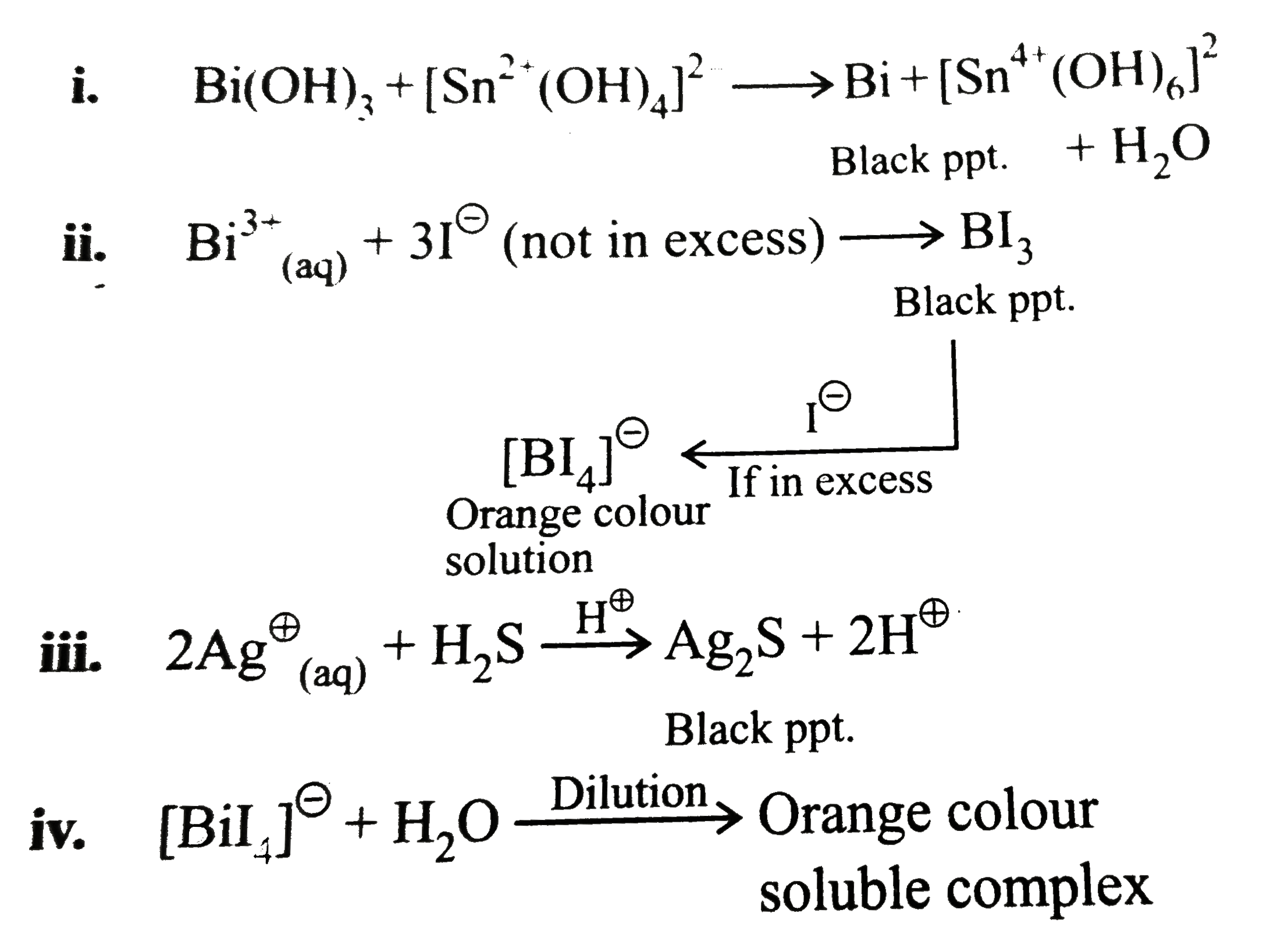In how many of the following reactions, one of the products is obtained is a black precipitate ?
i.Bi(OH)3⏐⏐↓+[Sn(OH)4]2−.(aq)→ Products
ii. Bi3+.(aq)+IΘ.(aq) (not in excess) → Producets
iii. Ag⊕.(aq)+H2S(g)H⊕−−→ Producets
iv. [BiI4]Θ.(aq)+H2O(I)Dilution−−−−→ Products
The correct Answer is:3
The following Reaction are
Topper's Solved these Questions
- QUALITATIVE INORGANIC SALT ANALYSISBOOK - CENGAGE CHEMISTRY ENGLISHCHAPTER - QUALITATIVE INORGANIC SALT ANALYSISEXERCISE - Exercises (Fill In The Blanks)
42 Videos
- QUALITATIVE INORGANIC SALT ANALYSISBOOK - CENGAGE CHEMISTRY ENGLISHCHAPTER - QUALITATIVE INORGANIC SALT ANALYSISEXERCISE - Exercises (True And False )
20 Videos
- QUALITATIVE INORGANIC SALT ANALYSISBOOK - CENGAGE CHEMISTRY ENGLISHCHAPTER - QUALITATIVE INORGANIC SALT ANALYSISEXERCISE - Exercises (Assertion-Reasion)
9 Videos
- P-BLOCK GROUP 18 ELEMENTS - THE INERT GASESBOOK - CENGAGE CHEMISTRY ENGLISHCHAPTER - P-BLOCK GROUP 18 ELEMENTS - THE INERT GASESEXERCISE - Ex 5.1 (Objective)
14 Videos
- REDUCTION AND OXIDATION REACTION OF ORGANIC COMPOUNDSBOOK - CENGAGE CHEMISTRY ENGLISHCHAPTER - REDUCTION AND OXIDATION REACTION OF ORGANIC COMPOUNDSEXERCISE - SUBJECTIVE TYPE
4 Videos
Similar Questions
In how many of the following reactions one of the products is obtained as a black precipitate ?
(i)Bi(OH)3⏐⏐↓+[Sn(OH)4]2−(aq)→Products
(ii)Bi3+(aq)+I−(aq)(not in excess)→Products
(iii)Bi3+(aq)+H2S(g)H+−−→Products
(iv)[Bil4]−(aq)+H2O(l)dilution−−−→Products
(v)Bi3+(aq)+C9H7ON(5%)+H+(aq)+I−(6M)→ Products
(vi)Bi3+(aq)+C6H3(OH)3(10%)→Products
(vii)BiO.OH⏐↓+H2O2(aq)→ Products
View SolutionCH3OH+C2H5OHH⊕−−→ Products
View Solution
Knowledge Check
What is the reaction given below, called ?
H2O(l)+H2O(l)⇔H3O+(aq)+OH−(aq)AHydrolysis of waterBHydration of waterCDisproportionation of waterDAuto - protolysis of water
Balance the following half reactions in basis medium:
(a) CrO2−4(aq)→Cr(OH)Ө4(aq)
(b) CIOӨ(aq)→ClӨ(aq)
(c ) Bi3+(aq)→BiOӨ3(aq)
View SolutionWhat change will occur for the following reaction if the hypochlorous acid solution is diluted from 0.1 to 0.01 M?
HOCl(aq.)+H2O(l)⇔OCl−(aq.)+H3O+(aq.)
View SolutionIdentify A and B in the following reactions
AAq. NaOH −−−−−−→C2H5OHAgOH←−−−B
View SolutionIn the following reaction sequence
Ph−C≡CHaq.H2SO4−−−−−→Hg2+A1.CH3MgI−−−−−−→2.H2OB
the product (B) is
View SolutionIn the following reaction, how is the rate of appearance of the underlined Product related to the rate of disappearance of the underlined reactant ?
BrOɵ3(aq)+5Br–––ɵ(aq)+6H⊕(aq)→3Br2––––(l)+3H2O(l)
View SolutionIn the following reaction, how is the rate of appearance of the underlined Product related to the rate of disappearance of the underlined reactant ?
BrOɵ3(aq)+5Br–––ɵ(aq)+6H⊕(aq)→3Br2––––(l)+3H2O(l)
View Solution2Sn (s) + 2 NaOH (aq) + 2H2O→
View Solution
